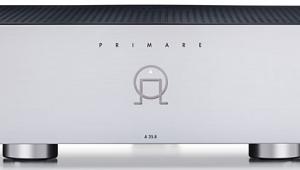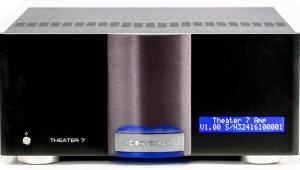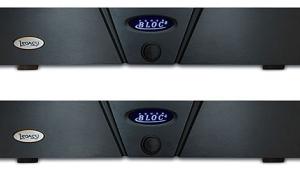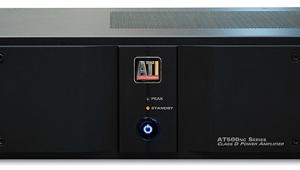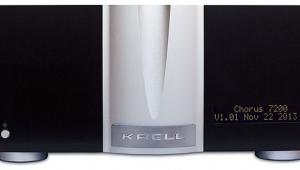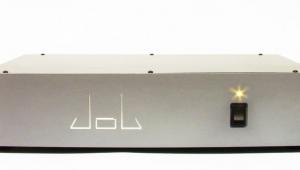Krell Chorus 7200 Amplifier Test Bench
Two channels driven continuously into 8-ohm loads:
0.1% distortion at 192.4 watts
1% distortion at 215.7 watts
Five channels driven continuously into 8-ohm loads:
0.1% distortion at 134.4 watts
1% distortion at 163.0 watts
Seven channels driven continuously into 8-ohm loads:
0.1% distortion at 133.9 watts
1% distortion at 162.4 watts
Frequency response RCA input:
–0.03 dB at 10 Hz
+0.00 dB at 20 Hz
–0.12 dB at 20 kHz
–3.16 dB at 50 kHz
Frequency response XLR input:
–0.02 dB at 10 Hz
+0.01 dB at 20 Hz
–0.14 dB at 20 kHz
–3.33 dB at 50 kHz.

This graph shows that the 7200’s amplifier channel 1, with two channels driving 8-ohm loads, reaches 0.1% distortion at 192.4 watts and 1% distortion at 215.7 watts. Into 4 ohms, the amplifier reaches 0.1% distortion at 319.6 watts and 1% distortion at 368.4 watts. An input level of 148.0 millivolts was required to produce an output of 2.83 volts into an 8-ohm load, indicating an overall gain of +25.66 decibels using the RCA input. When using the XLR input, a level of 147.7 millivolts was required to produce an output of 2.83 volts into an 8-ohm load, indicating an overall gain of +25.68 decibels.
THD+N from the amplifier was less than 0.008% at 1 kHz when driving 2.83 volts into an 8-ohm load using the RCA input. When using the XLR input under the same conditions, THD+N was less than 0.009%. Crosstalk at 1 kHz driving 2.83 volts into an 8-ohm load was –101.24 dB channel 1 to channel 7 and –104.44 dB channel 7 to channel 1 using the RCA inputs and –106.37 dB channel 1 to channel 7 and –104.85 dB channel 7 to channel 1 using the XLR inputs. The signal-to-noise ratio with an 8-ohm load from 10 Hz to 24 kHz with “A” weighting was –106.12 dBrA using the RCA input and –106.21 using the XLR input.—MJP

